A review of the genus Zygota (Hymenoptera, Diapriidae) in Germany with taxonomic notes on this genus and its distinction from Pantoclis
- PMID: 39091449
- PMCID: PMC11292123
- DOI: 10.3897/zookeys.1207.121725
A review of the genus Zygota (Hymenoptera, Diapriidae) in Germany with taxonomic notes on this genus and its distinction from Pantoclis
Abstract
This study provides a comprehensive overview of the genus Zygota Förster combining DNA barcoding and current morphology. Nineteen species of Zygota were found throughout Germany, including the newly described species Zygotawalli sp. nov. First species records for Germany are: Zygotabalteata Macek, 1997; Z.comitans Macek, 1997; Z.spinosipes (Kieffer, 1908); Z.sordida Macek, 1997; Z.angularis Macek, 1997 and Z.vigil Nixon, 1957. We also clarify diagnoses for the two related genera, Pantoclis Förster and Zygota to designate the boundaries of the Zygota genus and propose new synonymies: Zygotacaligula Buhl, 1997 is a junior synonym of Z.congener (Zetterstedt, 1840); Z.reticulata Kozlov, 1978 is a junior synonym of Z.ruficornis (Curtis, 1831). Thirteen species of Zygota sensu Nixon (1957) are transferred to the genus Pantoclis with the following new combinations proposed: Zygotabrevinervis (Kieffer, 1908) (= Pantoclisbrevinervis (Kieffer, 1909), comb. nov.); Z.brevipennis (Kieffer, 1908) (= P.brevipennis (Kieffer, 1908), comb. nov.); Z.caecutiens (Kieffer, 1908) (= P.caecutiens (Kieffer, 1908), comb. nov.); Z.cursor (Kieffer, 1908) (= P.cursor (Kieffer, 1908), comb. nov.); Z.fossulata (Thomson, 1858) (=P.fossulata (Thomson, 1858), comb. nov.); Z.fuscata (Thomson, 1858) (= P.fuscata (Thomson, 1858), comb. nov.); Z.hemiptera (Thomson, 1858) (= P.hemiptera (Thomson, 1858), comb. nov.); Z.microtoma (Kieffer, 1909) (= P.microtoma (Kieffer, 1909), comb. nov.); Z.soluta (Kieffer, 1907) (= P.soluta (Kieffer, 1907), comb. nov.); Z.striata (Kieffer, 1909) (= P.striata (Kieffer, 1909), comb. nov.); Z.subaptera (Thomson, 1858) (= P.subaptera (Thomson, 1858), comb. nov.); Z.sulciventris (Kieffer, 1909) (= P.sulciventris (Kieffer, 1909), comb. nov.), and Z.unicolor (Kieffer, 1908) (= P.unicolor (Kieffer, 1908), comb. nov.).
Keywords: Checklist; DNA-barcoding; integrative taxonomy; new records; new species; new synonymy; parasitoid wasps.
Jeremy Hübner, Vasilisa Chemyreva, Jan Macek, Victor Kolyada.
Conflict of interest statement
The authors have declared that no competing interests exist.
Figures


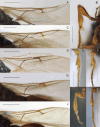

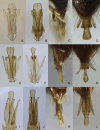

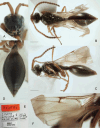
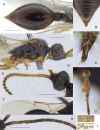
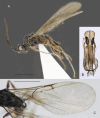
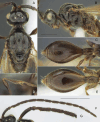
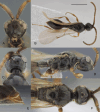

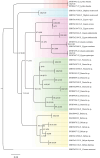

References
-
- Ashmead WH. (1893) 45 A Monograph of the North American Proctotrypidae. Government Printing Office, Washington, 472 pp. 10.5479/si.03629236.45.1 - DOI
-
- Ashmead WH. (1902) Classification of the pointed-tailed wasps, or the superfamily Proctotrypidae. Journal of the New York Entomological Society 10: 240–247.
-
- Blank SM. (2001) Diapriidae. In: Dathe HH. (Ed.) Verzeichnis der Hautflügler Deutschlands.Fauna Germanica. Entomofaunistische Gesellschaft e.V., Dresden, 34–43.
-
- Buhl PN. (1995) The proctotrupoid wasps of Greenland (Hymenoptera, Proctotrupoidea s.l.). Entomologiske Meddelelser 63: 7–10.
-
- Buhl PN. (1997) On some new or little known species of Belytinae from Norway (Hymenoptera: Diapriidae). Folia Entomologica Hungarica 58: 45–55. 10.1080/00305316.1998.10433766 - DOI
LinkOut - more resources
Full Text Sources
